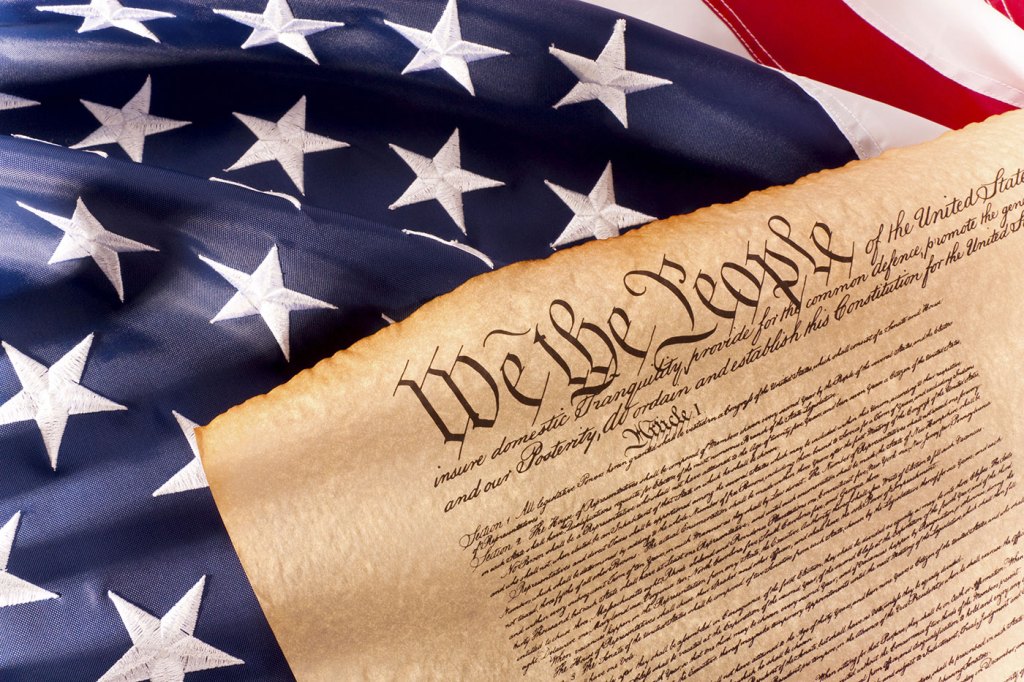Constitution Day was this weekend, but should it have been?

With presidential elections looming less than two months away and coverage of the candidates dominating almost every news cycle, it’s unlikely the U.S. political system is far from anyone’s mind these days. What might be buried deeper, however, is the document that formed the foundation for what America is today—the U.S. Constitution.
This weekend marked the 229th anniversary of the day the 39 men who drafted the Constitution met as a Constitutional Convention for the final time to sign it. Here’s what you need to know about Constitution Day and how to commemorate the historic event.
What’s that date, again?
Constitution Day is celebrated each year on Sept. 17, though it might make more sense to push it back a few months.
Michael Tolley, associate professor of political science in the College of Social Sciences and Humanities and an expert in comparative constitutionalism, explains that he’s “thought it strange that we were required to commemorate the Constitution on or near Sept. 17, the day in 1787 when the delegates completed their work on the proposed Constitution and adjourned.

Political Science Professor Michael Tolley delivers a lecture on Constitution Day 2015. Photo by Matthew Modoono/Northeastern University
“It wasn’t the Constitution yet and it wasn’t clear then if it would be ratified,” he said. “June 21 makes more sense to me. It was on June 21, 1788, that New Hampshire became the ninth state to ratify, which was the number the framers decided was needed to put the new framework of government into effect.”
Sign, then celebrate
Though there were 55 delegates to the Constitutional Convention at one time or another, only 39 signed the Constitution. Of the remaining 16 delegates, three dissented and two—Thomas Jefferson and John Adams—were overseas at the time of the signing. As for the rest?
“Since they were coming and going throughout the summer, I suspect the signers were those who just happened to be around at the end,” Tolley said. The 11 unaccounted-for delegates “may have already returned home,” he said.
Those who did sign it though? They knew how to celebrate afterward.
“Washington’s diary reports what he and the other delegates did after affixing their signatures on Sept. 17—they retired to the local tavern!” Tolley said.
Age before beauty
At 81, Benjamin Franklin of Pennsylvania was the oldest delegate at the Constitutional Convention and at 26, Jonathon Dayton of New Jersey was the youngest.
More than 11,000 amendments have been introduced in Congress since the ratification of the Constitution. Thirty three have gone to the states to be ratified and 27 have received the necessary approval from the states to actually become amendments to the Constitution.
Tolley noted that James Madison was tasked with drafting the amendments that would “include the rights that critics during the ratification process thought needed to be part of the Constitution.”
Madison proposed 17 amendments that passed in both houses of Congress, he said. By 1791, the state legislatures had ratified 10, which collectively became the Bill or Rights.
“What happened to two of those that were not ratified then is interesting,” Tolley said. “The subject matter of Madison’s original proposed 14th Amendment later found its way into what is today’s 14th Amendment.”
The 14th Amendment, ratified in 1868, grants citizenship to “all persons, born or naturalized in the United States,” including former slaves recently freed.
“I have always been struck by the coincidence of that constitutional anomaly,” Tolley said. “The other interesting quirk is that the 27th Amendment, ratified in 1992, was part of Madison’s original package of 17 proposed amendments.”
The 27th Amendment prohibits any law that increases or decreases the salary of Congressmen and Congresswomen from taking effect until the start of the next set of terms of office for Representatives.
Northeastern, for its part, offers a few ways to commemorate Constitution Day today.
Listen in
Chief among those celebrations is a lecture hosted by the Office of the Provost and Department of Political Science, which will be held in the Raytheon Amphitheater from 10:30 to 11:45 a.m. Titled, “The Rise of the American Vice Presidency: A Constitutional Perspective,” Joel K. Goldstein, the Vincent C. Immel Professor of Law at the Saint Louis University School of Law, will deliver the keynote address on the shifting nature of the vice presidency.
The lecture promises to reveal the challenges of operating a complex system of national government today based on a document written in the late-18th century.
—Michael Tolley
Tolley himself has delivered Constitution Day lecture in the past, anchoring them on his own expertise in comparative constitutionalism.
Of the topic this year, he said, “I have a hunch the office of the vice presidency has been transformed over the past few decades and I look forward to learning more about that development.” He added that the lecture “promises to reveal the challenges of operating a complex system of national government today based on a document written in the late-18th century.”
Read up
Another option for Constitution Day enthusiasts can be found in the Snell Library, which houses two rare books related to the Constitution.
The first, Remarks on the proposed plan of a federal government, addressed to the citizens of the United States of America, and particularly to the people of Maryland, is a 1788 work by Alexander Contee Hanson, Sr.
Hanson served as assistant private secretary to George Washington and, in 1778, became a high-ranking judge in Maryland. His Remarks is dedicated to Washington.
The second, Answers to Mr. Mason’s objections to the new constitution, recommended by the late convention, is an 1888 reprint of an editorial by James Iredell that was published a century prior.
Iredell, a lawyer by trade, was among North Carolina’s staunchest supporters of adopting a federal Constitution. Answers was a response to Virginia Constitutional Convention delegate George Mason’s objections to it.
Washington rewarded Iredell’s ratification efforts by appointing him as one of the original justices on the U.S. Supreme Court.





